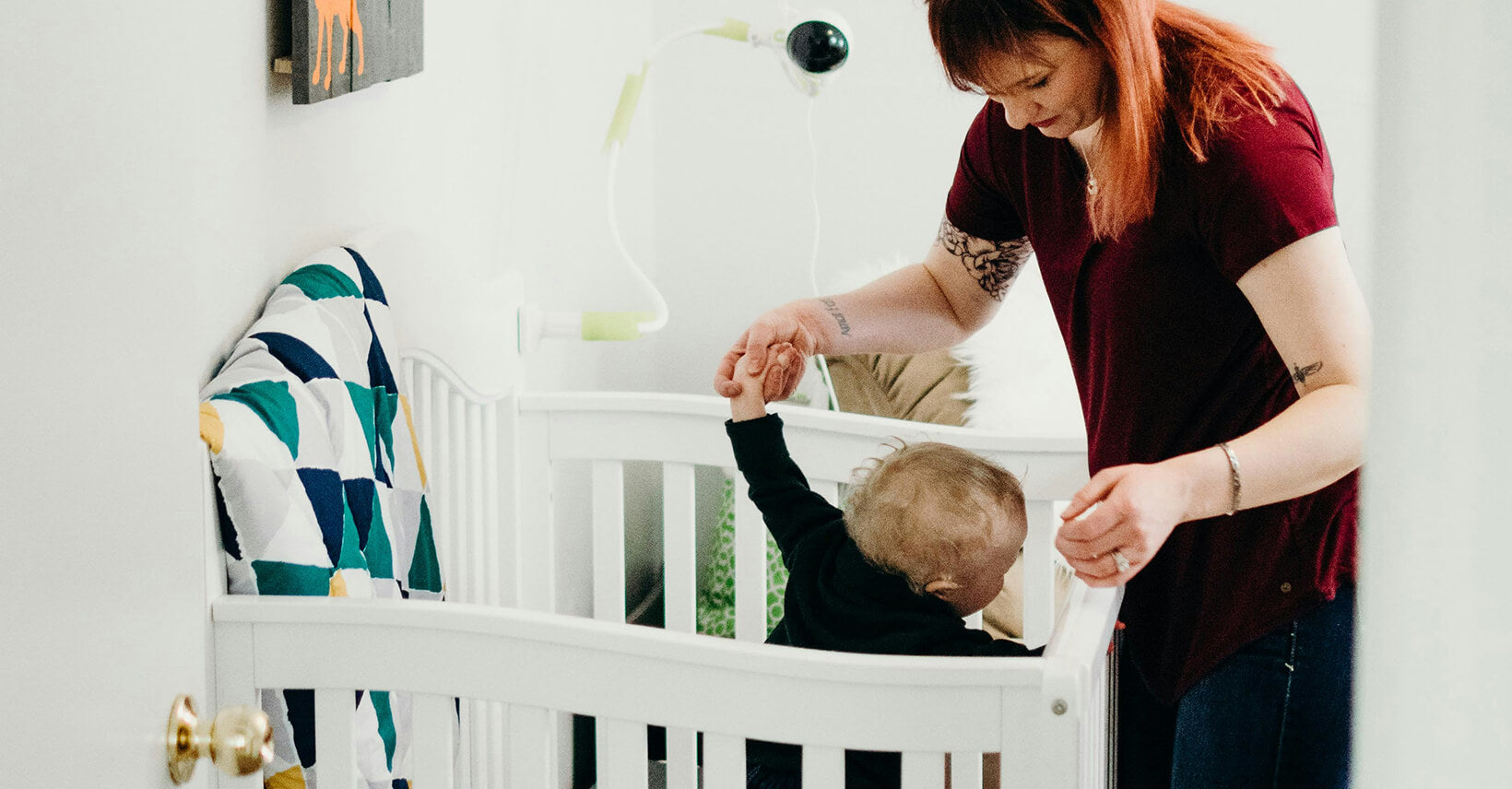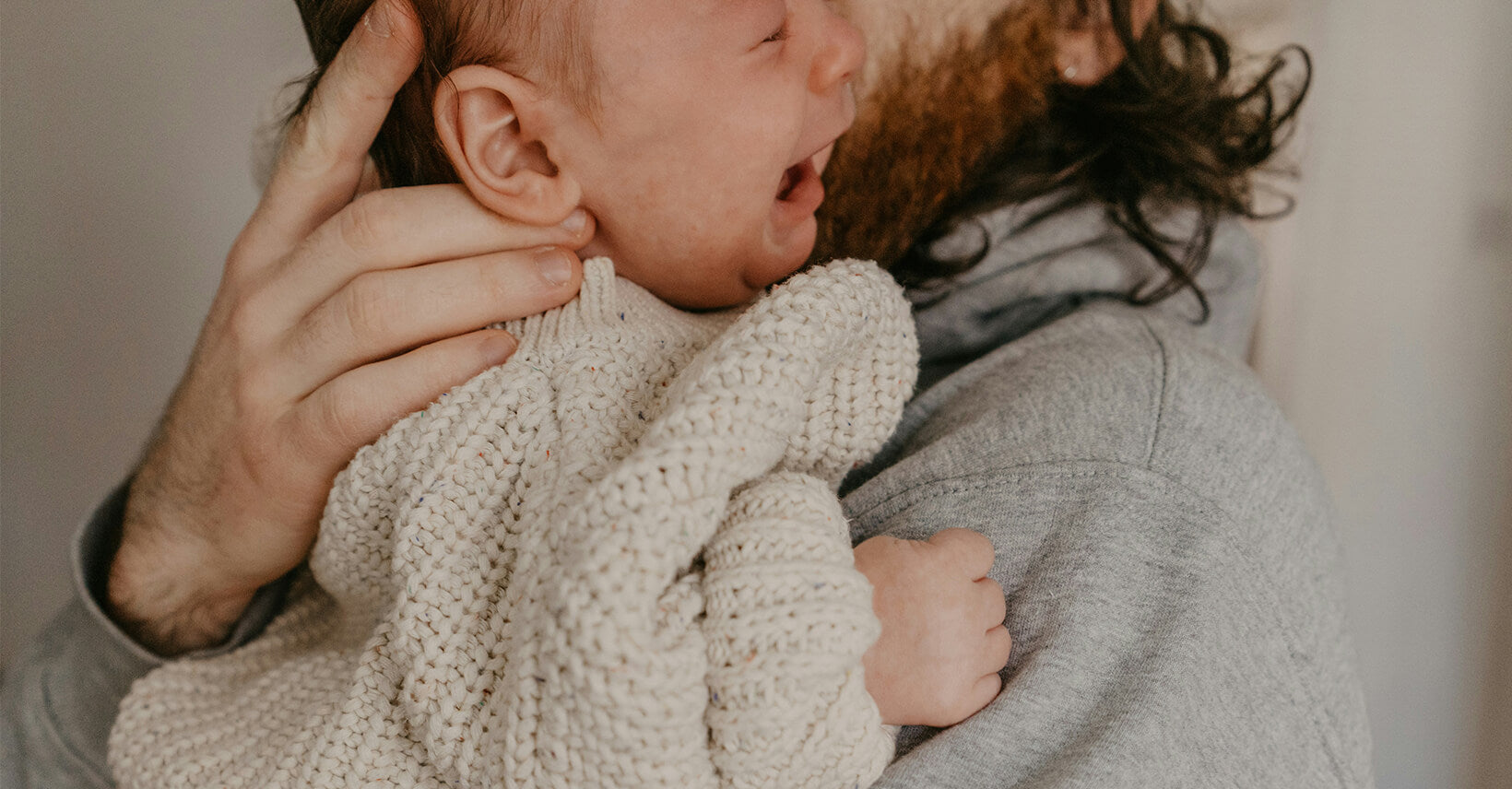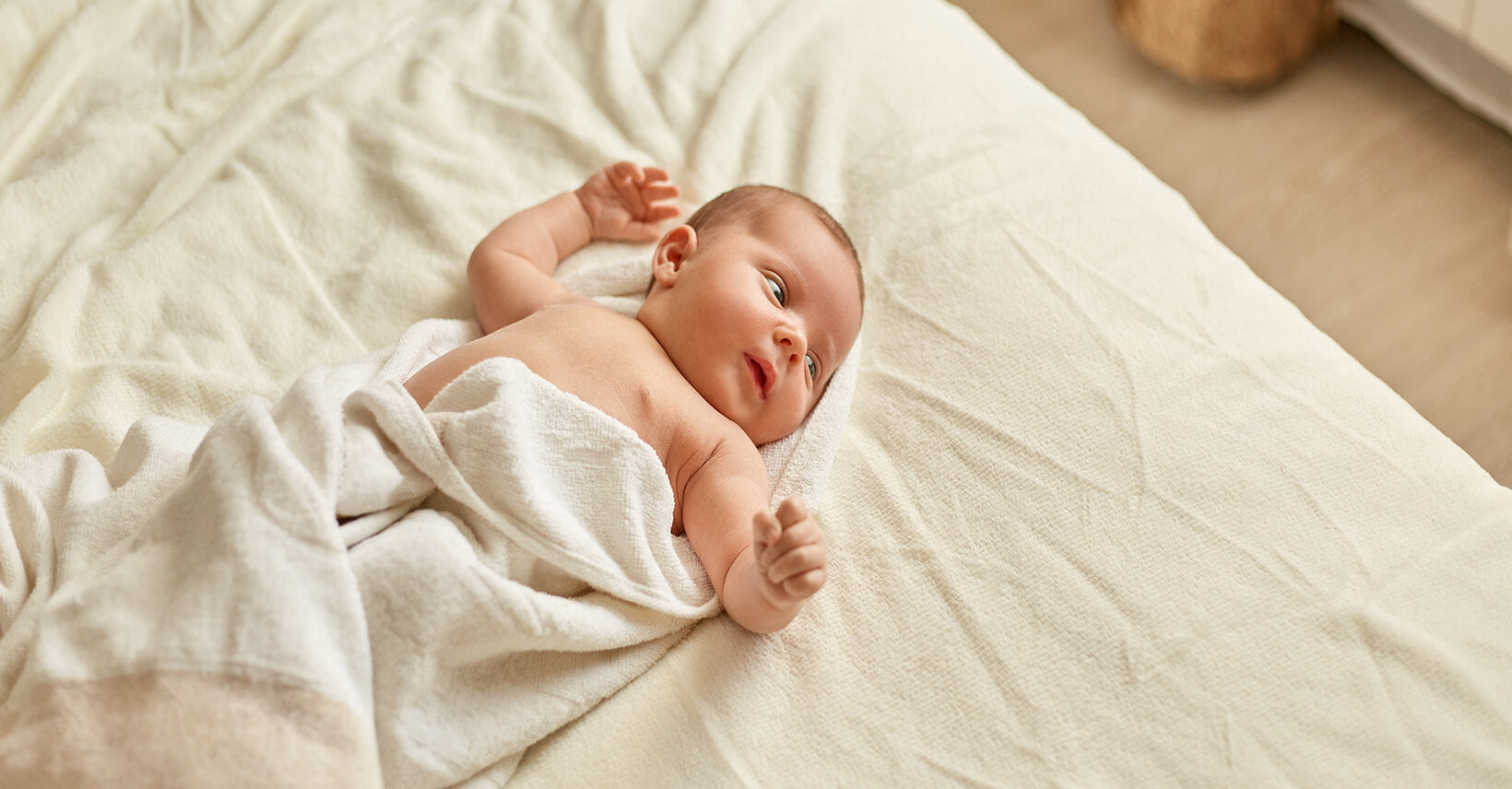
Why Babies Resist the Crib And How to Help Them Sleep?
Oh, the cries of a baby resisting sleep! There you are, swaying and shushing your little one in your arms, their eyes fighting heavy eyelids. Gently you lay them down in the crib, hoping tonight will be different. But as soon as their back touches the mattress, the wailing begins anew. Tiny arms reach upwards begging to be held just a while longer.
You scoop them up again, their tears drying against your shoulder. A mix of emotions swirls within—relief at comforting your child, weariness from weeks of sleepless nights, frustration that the battle continues. Still, your heart melts feeling their tiny body curled against you, small fingers grasping yours. This stage is but a season, you remind yourself. One day the crib will mean restful slumber for all.
For now, take courage fellow parent. You are not alone in this struggle. With time and consistency, we can guide our little ones to find security in their crib and discover the beauty of peaceful sleep. Let us walk this journey together, celebrating each new milestone of independence. Our children blossom a little more each day, whether resisting bedtime or sleeping soundly through the night.
First, let us have a general understanding of the possible reasons why the baby is unwilling to sleep on the crib.
Why won’t my baby sleep in the crib?
Lack of sleep association
Babies learn that the last awake surroundings = place to fall asleep. If always falling asleep nursing/rocking, they may see the crib as just a place to sleep vs a place to fall asleep.
To build the crib-sleep association, put drowsy baby in crib awake so they learn to self-soothe to sleep in that environment.
Uncomfortable environment
A loose sheet or bad mattress fit can cause discomfort waking baby from sleep.
Too much light/noise makes it harder to fully relax. Dark quiet helps melatonin production for sleep.
Hot/cold indoor temps can disturb sleep regulating body temperature. Find baby's comfort zone.
Missing the motion
Rocking/nursing motion is soothing and what they're used to. No motion in crib may startle or upset them at first.
Vibration, white noise machine or mobile can simulate soothing motion until they adjust without it.
Separation anxiety
Being alone in a new place can trigger anxiety in babies used to sleeping with caregivers nearby.
Their strong need for attachment causes distress at being apart from parents at bedtime.
Gradually increasing time apart during the day helps them feel more comfortable at night.
Sudden changes in routine
An abrupt change from co-sleeping or rocking can disrupt sleep due to unnecessary stress.
It's better to slowly extend crib time over weeks to avoid crying fits from schedule changes.
Overstimulation before bed
Too much light, noise, or activity raises stress hormones and arousal levels.
Babies have a harder time calming down without the familiar pre-sleep routine.
Keep the hour before bed low-key to help relaxation and melatonin production.
Not developmentally ready
Some babes physically and mentally need caregiver closeness for sleep until around 4-6 months.
At this age they have typically developed the ability to self-soothe and connect crib to sleep.

Why does my baby sleep in my arms but not in crib?
Here are some potential reasons why a baby may sleep in your arms but not in the crib.
Over-reliance on co-sleeping: The baby has developed a strong habit of falling asleep holding/touching the parent at night. They haven't formed an independent sleep association in the crib.
Reduced sense of safety and comfort: Babies feel secure with body heat and touch from parents while co-sleeping. Being alone in the crib lowers these comforting feelings.
Difficulty with emotional self-regulation: A sudden transition from co-sleeping to solitary sleep poses greater psychological adjustment challenges. A gradual approach is needed.
Environmental mismatches: Factors like temperature, light, noise levels etc. may not match the baby's preferences, making sleep onset more difficult alone.
Individual developmental needs: Some babies have stronger needs and will take extra practice time/ repetitions to grow accustomed to independent sleep.
Why does my baby wake up as soon as I put her in the crib?
Babies waking up as soon as they're placed in the crib is a common concern for many parents. There are several reasons why this might happen.
Transition from Sleep to Awake: Babies often have light sleep phases, just like adults. When you transfer your baby to the crib, they may transition from a deeper sleep to a lighter sleep phase, causing them to wake up.
Warmth and Comfort: Babies are used to the warmth and comfort of being held or cuddled. The crib can feel cool and less comforting in comparison. Swaddle blankets or sleep sacks can help provide a sense of security and warmth.
Sudden Change: The change in environment, from being in your arms to the crib, can be unsettling for a baby. They may wake up due to the sudden change in sensory experiences.
Hunger or Discomfort: If your baby is hungry or uncomfortable (e.g., wet diaper), they may wake up when placed in the crib. Ensure your baby's needs are met before putting them down to sleep.
Startle Reflex: Many infants have a startle reflex, where they suddenly flail their limbs. This can cause them to wake up if they're not securely swaddled or if their sleep is disrupted.

Sleep Associations: Babies often associate falling asleep with a specific routine or action (e.g., feeding, rocking). If they wake up in a different environment, they may struggle to fall back asleep without the associated routine.
How long should I wait if my baby isn't falling asleep in the crib?
Here are some guidelines for how long to wait if your baby isn't falling asleep in the crib.
Up to 10-15 minutes of fussing is generally considered normal for young babies to self-soothe and fall asleep. Going in too quickly won't allow them to learn.
From 4-6 months, waiting up to 20 minutes of consistent fussing is reasonable before intervening. At this age they are developing self-soothing skills.
Stay nearby for reassurance but don't pick up or interact with the baby during the waiting period. Just soothing voice or pats from outside the crib.
After 6 months, some babies may take close to 30 minutes to adjust to independent sleep. Be consistent with bedtime routine and calm environment.
Keep nighttime interactions minimal if responding before the wait period ends. Don't prolong or you risk sleep association issues.
Watch for signs of overt distress vs normal fussing. True upset will progress to full crying. Wait periods may need adjusting based on your baby's cues.
Check diaper, temperature and needs are met before bed. Teething/illness may shorten patience.
Consistency is key. Leaving to self-soothe for a reasonable window provides healthy sleep learning over time.
What to do when your baby won't sleep in their crib?
Short Interval Method
Lay the baby in the crib when they are drowsy but not fully asleep yet. Gently increase the duration over time, such as 1 minute at first, then 2 minutes, 5 minutes and so on. This helps them slowly form the sleep association with the crib. Each time keep a calming music and soothing tone.
Sensory Cues Method
Introduce a loved blanket, stuffed animal or other familiar textile that carries the baby's scent. Leaving this in the crib helps provide comforting sensory continuity as they fall asleep without direct contact. You can also use white noise, breathing monitors or nightlights set at low brightness to mimic familiar elements in a non-threatening way.
Consistent Routine Method
Establish a fixed soothing bedtime routine like bath, book, lullabies in the same sequential order. Doing this routines partially in the crib each night builds its association as a place to unwind and fall asleep. With time and positive experiences, babies feel secure to doze off in the crib on their own.
Contact Sleep Method
Sit close beside the crib and softly soothe the baby through the bars until they fall asleep. Initially it may take longer but gradually reduce contact time. This allows them to adjust to the crib while still feeling supported.
Graduated Intervals Method
Help initiate sleep with gentle touch like stroking hair or blanket. Slowly decrease intervals, e.g. 5 mins of contact, then 3 mins, 1 min and see if they can connect to sleep independently. Repeating this training provides flexible support.
Drowsy But Awake Method
Put drowsy baby in crib awake instead of fully asleep. Leave room while they connect sleep on their own through self-soothing. With consistency, they learn to be comfortable falling asleep without rocking or nursing. verbal reassurance can curb overt distress.
Remove-Reinsert Method
Take baby from crib if fussy for more than 10 mins. Calm and settle, then return to crib still drowsy. Over time, fussy periods lessen as they learn crib means sleep not play. Keep interactions brief but loving.
What are some strategies to help my baby feel more secure in their crib?
Use a transition object: Provide a baby blanket, stuffed animal or other special item that carries your scent. This helps ease separation anxiety when they are in the crib alone.
Play music or white noise: Playing the same calming sounds they are used to hearing with you can make the crib environment feel more familiar.

Minimize visual separation: Try a video or audio monitor that allows them to still see/hear you even when not right beside the crib.
Add a familiar smell: Place an article of clothing you've worn next to them so your personal scent is still present.
Stay nearby initially: Sit just outside the room where they can see your shadow or hear your voice until fully asleep.
Keep nightlights on: A gentle glow can alleviate fears of total darkness that might seem frightening alone.
Give affection before bed: Extra cuddles, kisses and reassurance during your routine helps them feel emotionally secure as they drift off.
Creating physical, auditory and emotional continuity between your presence and the crib can help babies bravely face independent sleep.
Our favorites

Yujia Shi
An expert in sleep sack design, is a valued contributor to Kaiya Baby's blog. With a strong background in baby sleep bags and maternal care, she is highly regarded for her professionalism. Yujia Shi prioritizes baby comfort and safety in her designs, using high-quality materials. Her insightful articles on sleep bags have been featured in reputable publications and have gained a significant readership. Trust Yujia Shi to help you create a comfortable and safe sleep environment for your baby, backed by her proven track record in the industry.






Leave a comment
This site is protected by reCAPTCHA and the Google Privacy Policy and Terms of Service apply.